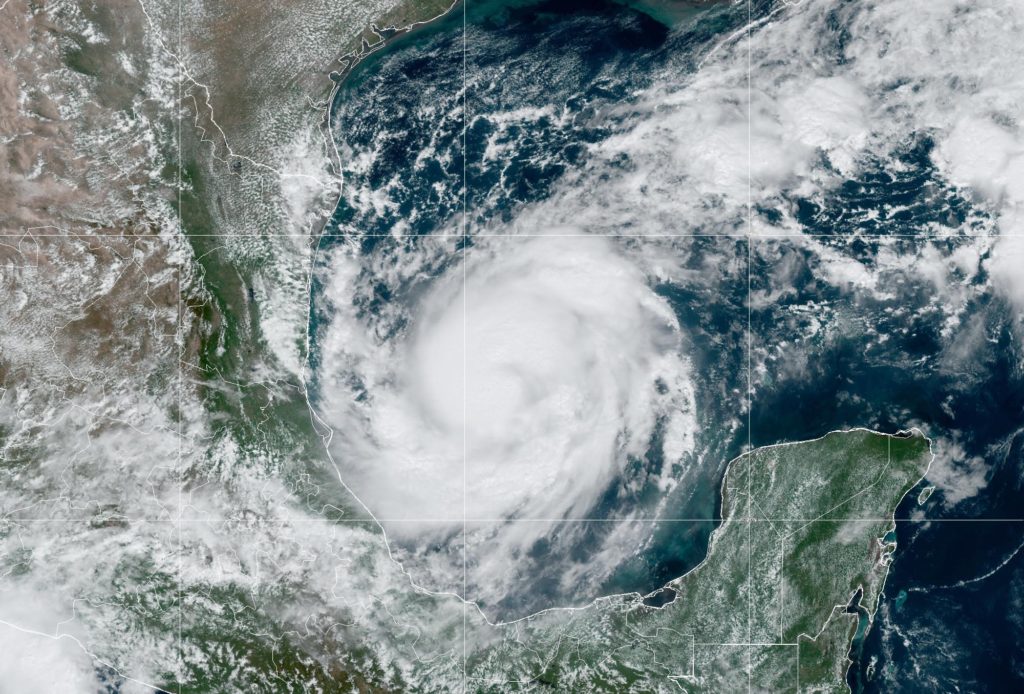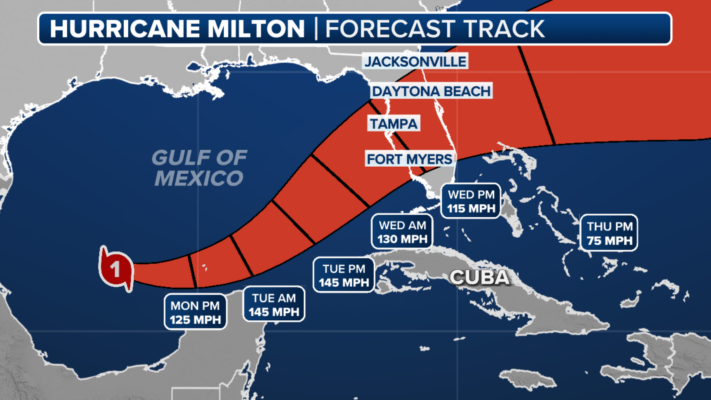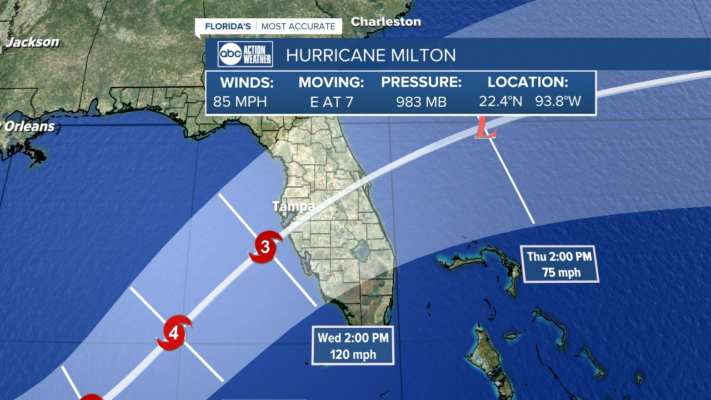Hurricanes are one of nature’s most powerful phenomena, capable of causing widespread destruction and loss of life. Understanding their life cycle is crucial for preparedness and response. In this blog post, we will explore the timeline of Hurricane Milton, a notable storm that impacted various regions during its existence. We will trace its formation, development, peak intensity, and eventual weakening, providing insights into its path and effects.

Formation: August 2024
August 20, 2024: The Birth of a Storm
Hurricane Milton began as a tropical wave off the coast of Africa on August 20, 2024. This wave was characterized by a cluster of thunderstorms, which began to organize as it moved westward across the Atlantic Ocean. Meteorologists monitored the system closely, as conditions in the Atlantic were becoming increasingly favorable for tropical cyclone development due to warm sea surface temperatures and low wind shear.

August 22, 2024: Tropical Depression Formation
By August 22, the system had intensified enough to be classified as Tropical Depression 13. At this stage, the depression had sustained winds of 35 mph and was located approximately 1,200 miles east of the Lesser Antilles. The National Hurricane Center (NHC) issued its first advisory, predicting that the depression would strengthen as it continued to move westward.
August 24, 2024: Upgraded to Tropical Storm
On August 24, the depression intensified into Tropical Storm Milton, with winds reaching 40 mph. The storm began to exhibit a well-defined circulation and organized convection. Forecasters predicted that Milton would continue to strengthen as it moved into an area of higher ocean heat content and more favorable atmospheric conditions.
Intensification: Late August 2024
August 26, 2024: Rapid Intensification
Milton underwent rapid intensification, a phenomenon where a tropical cyclone strengthens significantly in a short period. By August 26, the storm had intensified into a Category 1 hurricane, with maximum sustained winds of 75 mph. Meteorologists noted an impressive outflow pattern and a well-defined eye, indicating that Milton was strengthening rapidly.

August 28, 2024: Peak Intensity
On August 28, Hurricane Milton reached its peak intensity as a Category 3 hurricane with sustained winds of 120 mph. The storm was located approximately 200 miles east of the Bahamas, and its well-formed eye was visible on satellite imagery. At this point, the NHC issued warnings for the Bahamas and parts of the southeastern United States, forecasting a potential landfall.
Landfall: Early September 2024
September 1, 2024: Landfall in the Bahamas
Hurricane Milton made landfall in the Bahamas on September 1, 2024. The storm caused widespread destruction, with storm surges inundating coastal areas and heavy rainfall leading to flash flooding. Reports indicated that wind gusts exceeded 130 mph, uprooting trees and damaging infrastructure. The Bahamian government declared a state of emergency, mobilizing resources for response and recovery efforts.
September 2, 2024: Impact on Florida
Following its passage through the Bahamas, Milton continued its northwest trajectory, making landfall in Florida on September 2. The storm weakened slightly to a Category 2 hurricane, with sustained winds of 100 mph. Coastal communities faced significant storm surges and flooding, leading to evacuations and emergency declarations in several counties. First responders worked tirelessly to assist those affected and restore essential services.
Weakening: September 2024
September 3, 2024: Transition to Extratropical System
As Hurricane Milton moved inland, it began to weaken rapidly due to friction with land and cooler air masses. By September 3, the storm had weakened to a tropical storm, with winds decreasing to 60 mph. The NHC noted that the system was transitioning into an extratropical cyclone, losing its tropical characteristics while still producing heavy rainfall and gusty winds across the southeastern United States.
September 4, 2024: Dissipation
By September 4, Hurricane Milton had fully dissipated. The remnants of the storm continued to bring rainfall to the southeastern U.S., contributing to localized flooding in some areas. However, the threat of severe weather had diminished significantly, and the NHC ceased advisories for the system.
Aftermath and Recovery
September 5, 2024: Assessing the Damage
In the wake of Hurricane Milton, authorities began assessing the damage in the Bahamas and Florida. Reports indicated significant destruction to homes, businesses, and infrastructure. Recovery efforts were initiated, with local and federal agencies working together to provide assistance to affected communities. The storm’s impact on agriculture and the economy was also a concern, as many farmers faced losses due to flooding and wind damage.
Ongoing Recovery Efforts
In the weeks and months following Hurricane Milton, recovery efforts continued. Aid organizations mobilized resources to assist those displaced by the storm, and rebuilding initiatives were launched to restore damaged infrastructure. The lessons learned from Milton’s impact contributed to ongoing discussions about hurricane preparedness and resilience in vulnerable coastal communities.6i
Hurricane Milton serves as a reminder of the power and unpredictability of tropical cyclones. From its formation as a tropical wave to its eventual dissipation, the storm impacted thousands of lives and highlighted the importance of preparedness and response. As we reflect on the timeline of Hurricane Milton, it is crucial to continue improving our understanding of hurricanes and enhancing our resilience to future storms. By studying past events, we can better prepare for the challenges that lie ahead in an era of climate change and increasing storm intensity.
